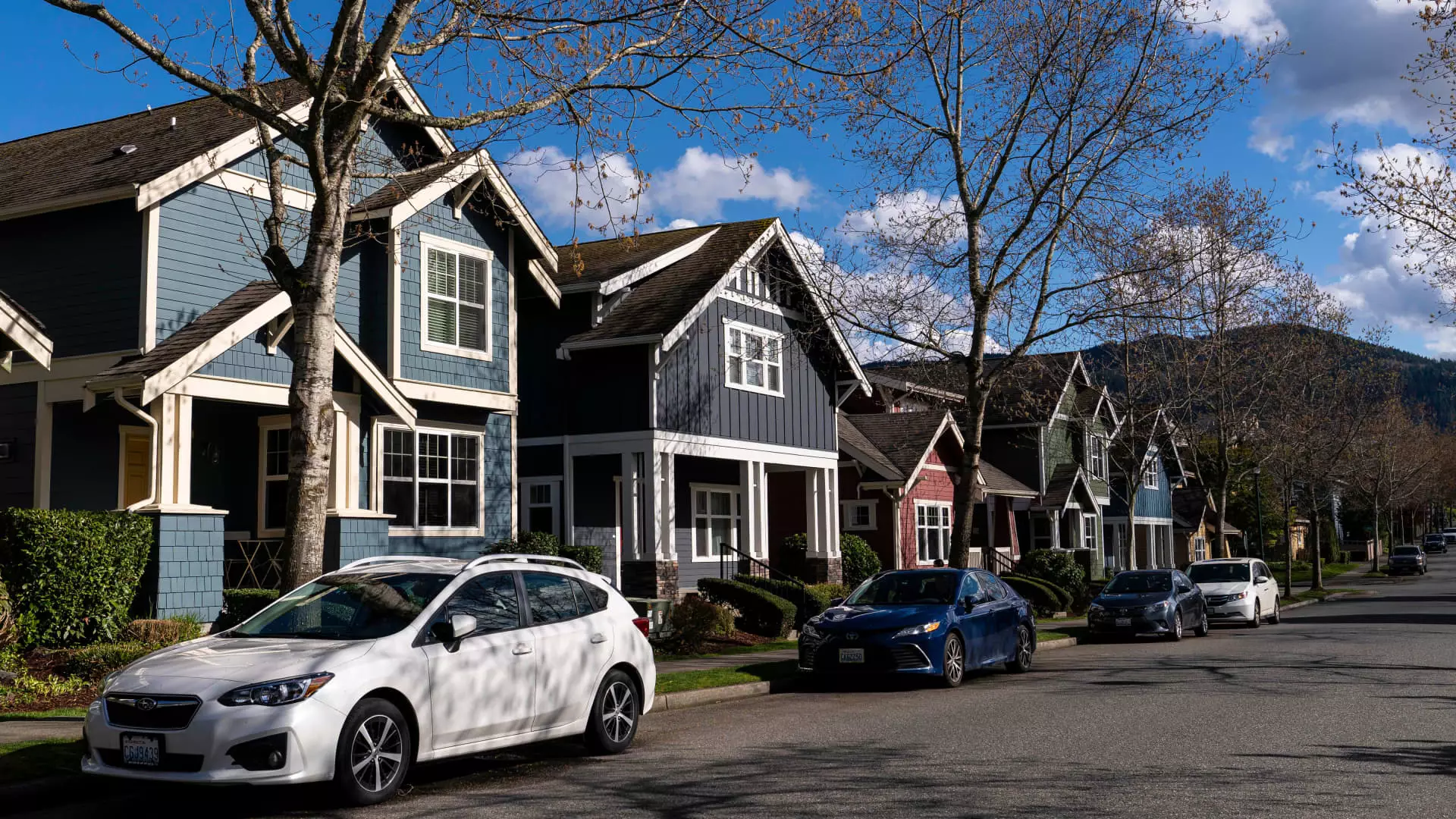The real estate market is facing significant challenges, with sales of previously owned homes stagnating at a 30-year low. In May, existing home sales saw a minimal change, dropping by 0.7% from April to reach a seasonally adjusted annual rate of 4.11 million units. This represents a 2.8% decrease from the previous year, highlighting the ongoing struggles within the sector. The slow pace of sales can be attributed to a combination of factors, including record-high prices and elevated mortgage rates.
Market Dynamics
The sluggish sales activity is occurring against the backdrop of rising mortgage rates, which surged in April. The average rate for a 30-year fixed loan climbed from just below 7% to over 7.5% before settling back slightly in May. Currently hovering around 7%, these high rates are deterring potential buyers and hindering the recovery of the housing market. Lawrence Yun, the chief economist at the National Association of Realtors (NAR), expressed disappointment in the lack of improvement, stating, “Home sales refuse to recover. I thought we would see a recovery this spring. We are not seeing it.”
Although sales remained relatively unchanged across most regions, the South experienced a 1.6% decrease in May. One of the most significant changes observed was the surge in the inventory of homes for sale, rising by 6.7% month-over-month and 18.5% year-over-year. Despite this increase, the current sales pace translates to a mere 3.7-month supply of homes. While more inventory may stimulate sales and moderate price growth in the coming months, demand continues to outstrip supply, sustaining the upward pressure on prices.
Price Escalation
The robust demand for housing is fueling price escalation, with the median price of existing homes hitting a record high of $419,300 in May. This marks a 5.8% increase from the previous year, representing the strongest gain since October 2022. Notably, prices rose across all regions, underscoring the widespread nature of the trend. The exponential growth in prices can be attributed to a combination of factors, including rising mortgage rates and a shortage of affordable housing options.
Market Segmentation
The market is witnessing a divergence in sales based on price points, with sales of homes priced below $250,000 declining compared to the previous year. In contrast, sales of homes priced between $750,000 and $1 million saw a notable increase of 13%, while sales of homes priced over $1 million surged by nearly 23%. Cash transactions accounted for 28% of sales, highlighting the importance of liquidity in completing real estate transactions.
Looking ahead, it is essential to monitor the dynamics of the real estate market closely, especially in light of the current challenges. While the increase in inventory may provide some relief to buyers, the persistent demand and escalating prices pose a significant hurdle. As the market continues to evolve, stakeholders must adapt to the changing landscape and explore innovative solutions to address the housing shortage and affordability concerns.


Leave a Reply